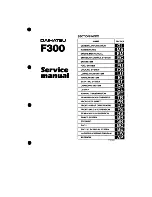
Technical data
Notes on technical data
General information on the
data
Except where indicated or specifically stated,
the technical data applies to the basic model.
The values may differ if additional equipment
is fitted, for different model versions and for
special vehicles and in the case of country-
specific vehicle specifications. All data in the
official vehicle documents always take prece-
dence.
The vehicle data sticker and the official vehi-
cle documents show which drive and which
power output are installed in your vehicle.
Please observe the notes and information for
vehicles with N1 approval → page 373,
Infor-
mation about vehicles with N1 approval (light
commercial vehicle)
.
Weight
The values for the kerb weight in the follow-
ing tables apply to the road-ready vehicle
with driver (75 kg), service fluids and, if appli-
cable, tools and spare tyre. Additional equip-
ment and retrofitted accessories increase the
stated kerb weight and reduce the maximum
permitted load accordingly.
The load comprises the weights of the fol-
lowing:
— Passengers
— All luggage
— Add-on parts
— Roof load
The permitted gross vehicle weight rating
and gross axle weight rating must never be
exceeded. The permitted values are provided
on the safety certificate (“safety compliance
label”) on the B-pillar on the driver side
Performance figures
The values apply only for optimum road and
weather conditions.
The performance figures were measured
without equipment which may detrimentally
affect performance, such as add-on parts.
Gross combination weight
The gross combination weight ratings listed
apply only to altitudes up to 1,000 m
(3000 ft) above sea level. The maximum gross
combination weight rating must be reduced
by approximately 10% for every further star-
ted 1,000 m (3000 ft) in altitude.
Gradient angle
The gradient angle is an indication of the ve-
hicle’s gradeability and corresponds to the
gradient that the vehicle can drive up under
its own power. This depends on aspects such
as the road surface, weather conditions and
engine power. The values apply to a moving
vehicle and not to driving off from standstill.
The number of metres in height gained over
a distance of 100 m (300 ft) (gradient) will be
given as a percentage or degree value (100%
= 45 degrees).
Vehicle identification number
Structure of the vehicle identification num-
ber
The vehicle identification number VIN com-
prises 17 characters. These characters are
categorised into seven groups.
The basic structure is explained below using
the example of the vehicle identification
number WVWZZZCBZLE400953. This is an
example.
Notes on technical data
387
11A012720AB
















































